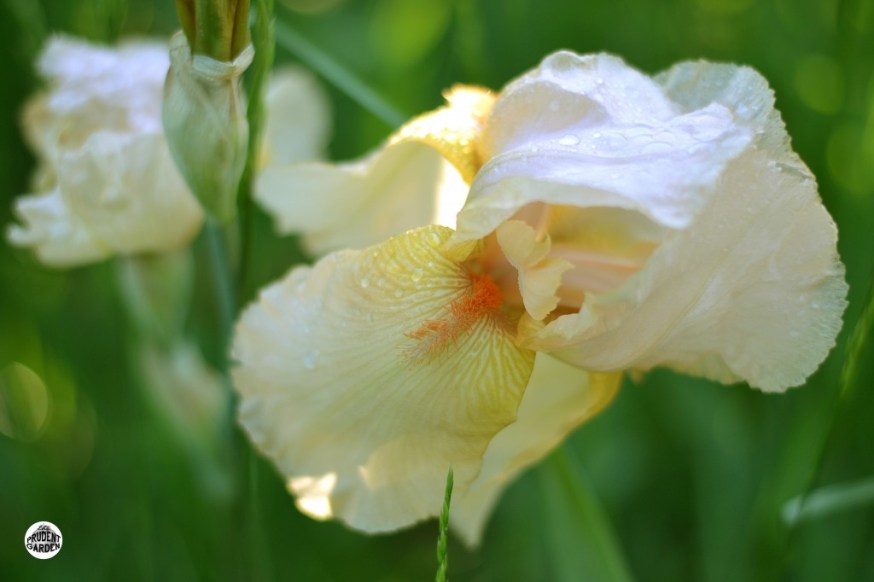
Bearded Iris
For a high degree of gardening success, it’s hard to beat the bearded iris. There is good reason that it is by far the most popular of the iris types. Bearded iris can be bought in “bare root” form or pot-grown. They are popular heirloom plants, because they are easy to share among family and friends. Also, it is not uncommon to find “wild” bearded iris that have either naturalized or seeded in old homesteads, fields and woods. They are not invasive, but they are rugged. And with the exception of the iris borer, they have almost no pests…more about that later.
How to Grow Bearded Iris
Growing bearded irises is easy and no nonsense. They’ll do best in soil that is moist but well drained with average fertility. Plant them just under the soil surface, you may need to add a little soil after watering them in, just keep them barely covered. I found the one in the photos growing in the woods, although it was not flowering the plant was healthy and seemed to thrive in the native soil. I planted it in a bed that was amended with compost then mulched with rotted hardwood chips (the mulch was not necessary for the iris, but was for the benefit of other plants). I have never fed them with fertilizer, the compost seems to be fine. In drought situations, bearded iris will benefit from some supplemental watering, but other than that they do quite well with what nature gives them. As for cold hardiness, have no fear: they’ll be equally happy in Maine or Minnesota as in California or Florida (USDA zones 3-10). Also, they come in nearly the full color spectrum: black, white, yellow, blue, red, and all shades and combinations thereof.

How to Divide
Dividing bearded irises is as easy as growing them. It can be done at any time after flowering and before the first fall frost. It should be done every three to five years to keep the plants growing vigorously and blooming profusely. Simply dig them up and break them apart. For slightly better results, take a bit more time and untangle the rhizomes (fat “root-stems”), use a sharp knife to remove any sections that are dead, mushy, or damaged. Also remove any spotty or brown leaves. Discard or burn any borer damaged plants, rhizomes, leaves, or flower stalks. All of the plants kept should have firm rhizomes (they should feel like a potato), and clean leaves…no spots. If borers have been a problem, it is wise to replant after dividing in a new bed, or one that has not had irises in it for several years.

Pests
As for the borers: they hatch in spring from eggs laid on garden debris in the late summer or early fall. The caterpillars enter through the leaf then tunnel through the plant until they are ready to make the change into a moth. The pupate in the soil and emerge as moths in summer, ready to lay eggs. To control them, remove and destroy (do not compost) garden debris, including iris foliage and stems, in the fall. In spring, around the first 70 degree day, spray with parasitic nematodes mixed with water. These microscopic roundworms will feed on the caterpillars. There will be no toxic residue as you find with insecticides, and the borers can’t develop a resistance.

Bearded iris is a good plant for beginners to include in a first garden, and when divided, it can be shared, traded, or passed on to new generations of gardeners. My favorite is an old purple one that was divided from my grandmother’s plant in Maryland. She planted it more than fifty years ago, and I was given a rhizome in 2006 and it is growing beautifully here in Georgia. Gardening is about more than biology and aesthetics. It is about sharing the love with one generation to another. I hope to have these irises for many years to come and look forward to sharing them with my kids! Happy Gardening.


I planted purple iris from my friends grandmother last fall and really enjoyed having the blooms this spring. I love using hand-me-down plants! Yours are beautiful..